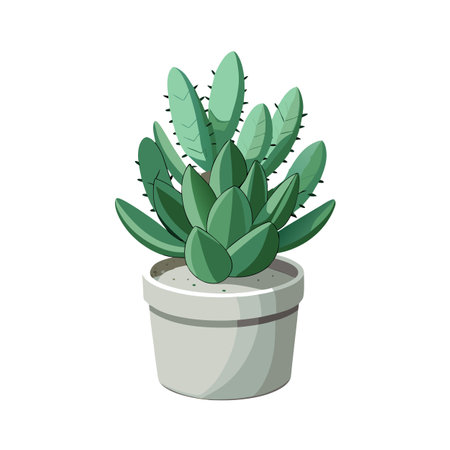Understanding the Difference: Conventional vs. Organic Gardening
If you’re considering making the shift from conventional to organic gardening, it’s important to start by understanding what truly sets these two approaches apart. In American gardens—whether you’re tending a suburban backyard or a few raised beds in the city—the choice between conventional and organic methods shapes not just what you grow, but how you interact with your land and community.
Conventional gardening often relies on synthetic fertilizers, pesticides, and herbicides to boost plant growth and control pests. This approach is typically rooted in maximizing yield and convenience, using products that are widely available at any big-box garden center. While conventional methods can produce quick results, they may also contribute to soil degradation, water pollution, and reduced biodiversity over time.
In contrast, organic gardening embraces a philosophy of working with nature rather than against it. Instead of reaching for chemical solutions, organic gardeners focus on building healthy soil through composting, crop rotation, and natural amendments like manure or cover crops. Pest control relies on integrated pest management (IPM), encouraging beneficial insects and using non-toxic remedies. For American gardeners, going organic means prioritizing sustainability and food safety—values that resonate strongly with families looking to protect both their health and the environment.
The benefits of organic gardening go beyond just what ends up on your dinner table. Healthier soil stores more carbon and retains water better during droughts—a key concern in many parts of the U.S. Plus, organic practices foster pollinator habitats and create a thriving ecosystem right in your own backyard.
Understanding these core differences lays the foundation for a successful transition. As we move forward in this guide, we’ll explore practical steps to help you leave behind conventional habits and embrace the rewards of growing organically—all tailored for the unique challenges and opportunities faced by American home gardeners.
Assessing Your Garden’s Current State
Before diving into organic gardening, it’s important to take a close look at what you’re working with. Assessing your garden’s current state gives you a clear understanding of your starting point and helps you make informed decisions as you transition from conventional methods. Here are the main areas to evaluate:
Soil Evaluation
Your soil is the heart of your garden. Start by checking its texture (is it sandy, clay, or loamy?), moisture retention, and drainage. Consider getting a soil test from your local county extension office—a common practice across the U.S.—to check for pH, nutrient levels, and possible contaminants like residual pesticides or heavy metals.
| Soil Test Factor | Ideal Range for Organic Gardening | Notes |
|---|---|---|
| pH Level | 6.0 – 7.0 | Most veggies thrive in this range |
| Nitrogen (N) | Medium | Too much can burn plants; too little stunts growth |
| Phosphorus (P) | Medium to High | Essential for root development |
| Pesticide Residue | None Detected | If present, remediation may be needed before going organic |
Plant Health Checkup
Look over your current plants for any signs of stress or disease. Are leaves yellowing or spotted? Do you see insect damage? Take notes on which plants are thriving and which seem to struggle. This information will help you identify patterns linked to soil health, watering habits, or past chemical use.
Common Issues to Watch For:
- Yellow Leaves: May signal nutrient deficiency or overwatering.
- Wilting: Could indicate poor drainage or root problems.
- Pest Damage: Look for chewed leaves or visible insects.
- Mildew/Fungus: White powdery spots often mean overcrowding or too much moisture.
Current Gardening Practices Inventory
Tally up what synthetic fertilizers, pesticides, herbicides, or fungicides you currently use. Make a list of your watering schedule, mulching habits, and composting efforts. Understanding these routines will show you where changes are needed and help you spot potential challenges ahead.
| Practice/Material | Status (Yes/No) | Comments/Alternatives for Organic Gardening |
|---|---|---|
| Synthetic Fertilizers Used? | Consider switching to compost or organic fertilizers like fish emulsion. | |
| Chemical Pesticides? | Replace with neem oil, insecticidal soap, or beneficial insects. | |
| Chemical Weed Control? | Try hand-pulling weeds or using mulch as a natural suppressant. | |
| Composting? | If not started, consider building a simple backyard compost bin. | |
| Irrigation System? | Drip irrigation is water-efficient and reduces leaf disease risk. |
The Bottom Line:
This honest assessment gives you a solid baseline and helps set realistic goals as you shift toward organic gardening. By knowing what’s in your soil, how your plants are faring, and what practices need adjustment, you’re better prepared to nurture a healthy, thriving organic garden right in your own backyard.

3. Building Healthy Soil Organically
One of the most important steps when transitioning from conventional to organic gardening is nurturing your soil back to health. Healthy soil is the foundation for any thriving organic garden, and you can restore it using nature-friendly methods that are both effective and sustainable.
Step Into Composting
Composting is a game changer for organic gardeners. By recycling kitchen scraps, grass clippings, leaves, and other plant-based waste, you create nutrient-rich compost that feeds your plants and improves soil structure. Start a backyard compost bin or pile—just make sure to keep a balance between “greens” (like vegetable peels) and “browns” (like dried leaves). Over time, these materials break down into black gold that you can mix into your beds for a natural boost.
Mulching Matters
Mulching isn’t just about making your garden look neat—it’s also an essential part of building healthy soil organically. Apply a thick layer of organic mulch, like shredded leaves, straw, or wood chips, around your plants. Mulch helps retain moisture, suppresses weeds, and slowly breaks down to add more nutrients to the soil. Plus, it encourages earthworms and beneficial microbes that keep your garden ecosystem humming.
Using Organic Amendments
If your soil needs extra help—say it’s too sandy or heavy with clay—organic amendments can make a big difference. Consider adding well-rotted manure, worm castings, or natural minerals like rock phosphate or greensand. These amendments gently enrich the soil without the harsh side effects of synthetic fertilizers. Remember: patience pays off in organic gardening. With every season, your soil will become richer and more fertile.
Sustainable Growth Starts Below the Surface
Transitioning to organic gardening means investing in your soil’s long-term health. By composting, mulching, and amending with natural materials, you’re not just growing better veggies—you’re building a resilient garden that can thrive year after year.
4. Natural Weed and Pest Management
One of the biggest shifts when moving from conventional to organic gardening is letting go of quick-fix chemical sprays and embracing a more hands-on, holistic approach. Luckily, there are plenty of tried-and-true methods that work well in American backyards, whether you’re gardening in the humid South, the dry West, or anywhere in between.
Understanding Your Weeds and Pests
Start by identifying which weeds and pests are common in your area. Each U.S. region has its own set of garden troublemakers—from crabgrass in the Midwest to aphids and Japanese beetles on the East Coast. Knowing what you’re up against helps you choose the best organic solutions.
Practical Chemical-Free Solutions
| Problem | Organic Solution | Best for Regions |
|---|---|---|
| Weeds | Mulching with straw, shredded leaves, or bark; hand-pulling after rain; using a hoe regularly. | All climates (adapt mulch to local resources) |
| Aphids | Release ladybugs; spray plants with a mild soap solution; plant companion flowers like marigolds. | Nationwide, especially in spring/summer gardens |
| Caterpillars & Hornworms | Handpick early in the morning; encourage birds; use Bacillus thuringiensis (Bt), an approved organic bacteria. | Southeast, Midwest, West Coast vegetable gardens |
| Slugs & Snails | Beer traps; diatomaceous earth around plants; copper tape as a barrier. | Pacific Northwest, Northeast (damp regions) |
| Japanese Beetles | Handpick into soapy water; trap crops like four o’clocks; row covers for small beds. | Midwest, East Coast during summer months |
Cultural Practices That Make a Difference
Crop rotation: Changing where you plant each crop every year interrupts pest life cycles.
Diverse planting: Mixing vegetables with herbs and flowers confuses pests and attracts beneficial insects.
Healthy soil: Composting boosts soil health, making plants stronger and less susceptible to infestations.
Tidy gardens: Removing dead leaves and fallen fruit limits hiding spots for pests.
A Family-Friendly Approach
If you’re gardening with kids or pets around, these natural methods let everyone safely join in—no worrying about toxic residues or off-limits zones. Plus, getting the whole family involved in scouting for bugs or laying down mulch can turn weed and pest management into a shared backyard adventure.
5. Choosing and Sourcing the Right Plants
One of the most rewarding steps in transitioning to organic gardening is carefully selecting what you’ll grow. Choosing the right plants can make your organic journey smoother, more productive, and a whole lot more fun for the whole family. Start by looking for certified organic seeds or seedlings—these are grown without synthetic chemicals and are often bred for resilience against pests and diseases. Many local nurseries, farmers markets, and even online retailers now offer a wide selection of organic seeds, so don’t be afraid to ask questions about their origins.
Seek Out Locally Adapted Varieties
For best results, focus on plants that are adapted to your specific region. Heirloom varieties and native species have evolved to thrive in your local climate and soil conditions with minimal intervention. They often require less water, fewer amendments, and are naturally resistant to common pests in your area. Check with your local cooperative extension office or master gardener groups—they’re a goldmine for advice on what grows well nearby.
Check Labels and Ask Questions
When buying seeds or transplants, look for labels like “USDA Organic,” “Non-GMO,” or “Heirloom.” These can help ensure you’re starting with quality material that aligns with your organic goals. If you’re shopping at a nursery or market, don’t hesitate to ask staff about the growing practices used by their suppliers. Most small growers love talking shop and will happily share details!
Think Beyond Vegetables
Remember, organic gardening isn’t just about tomatoes and cucumbers. Consider adding pollinator-friendly flowers like coneflower or milkweed, which support bees and butterflies while beautifying your space. Herbs such as basil, oregano, and chives not only spice up your meals but also attract beneficial insects to your garden.
By thoughtfully choosing organic seeds and locally suited plants, you’re setting yourself up for a healthier, more sustainable garden that fits right into your community—and gives you a harvest everyone can feel good about.
6. Maintaining Organic Practices Long-Term
Transitioning your garden to organic methods is a rewarding journey, but the real magic happens when you keep those good habits going year after year. Staying committed to organic practices helps ensure your garden remains healthy, productive, and environmentally friendly for seasons to come. Here are some tried-and-true strategies for maintaining your organic oasis over the long haul.
Crop Rotation: Keep Soil Healthy and Pests Guessing
One of the cornerstone principles in long-term organic gardening is crop rotation. By moving plant families around each season—like rotating tomatoes with beans or leafy greens—you can disrupt pest cycles and reduce soil-borne diseases. This practice also helps balance soil nutrients, since different crops have unique needs and contributions. Try mapping out your garden beds each winter so you’re ready for spring planting with a solid rotation plan.
Seasonal Planning: Think Ahead for Success
Organic gardens thrive on good planning. As each season winds down, take time to reflect on what worked well and what could be improved. Use a journal or a simple spreadsheet to track which varieties performed best, where pests showed up, and how much compost you needed. Consider adding cover crops like clover or rye during the off-season to enrich the soil naturally and prevent erosion.
Ongoing Soil Care: Feed the Earth That Feeds You
Your soil is the foundation of your organic garden’s health. Make it a habit to add compost regularly and mulch with natural materials like straw, leaves, or grass clippings. Avoid synthetic fertilizers; instead, focus on building soil life with worm castings, homemade compost teas, and aged manure if available. Testing your soil every few years can help you spot nutrient gaps before they become problems.
Stay Curious and Connected
The most successful organic gardeners never stop learning. Connect with local gardening groups, attend workshops at community centers or cooperative extensions, and follow reliable gardening blogs for fresh ideas. Don’t hesitate to experiment—each garden is unique, and what works for one family in California might be different from what works in Maine.
Embrace Patience and Celebrate Progress
Organic gardening is a marathon, not a sprint. Some seasons will be easier than others, but every year brings new lessons and small victories. Take pride in each harvest, no matter how big or small, knowing that you’re cultivating not just food but a healthier home ecosystem for generations to come.


